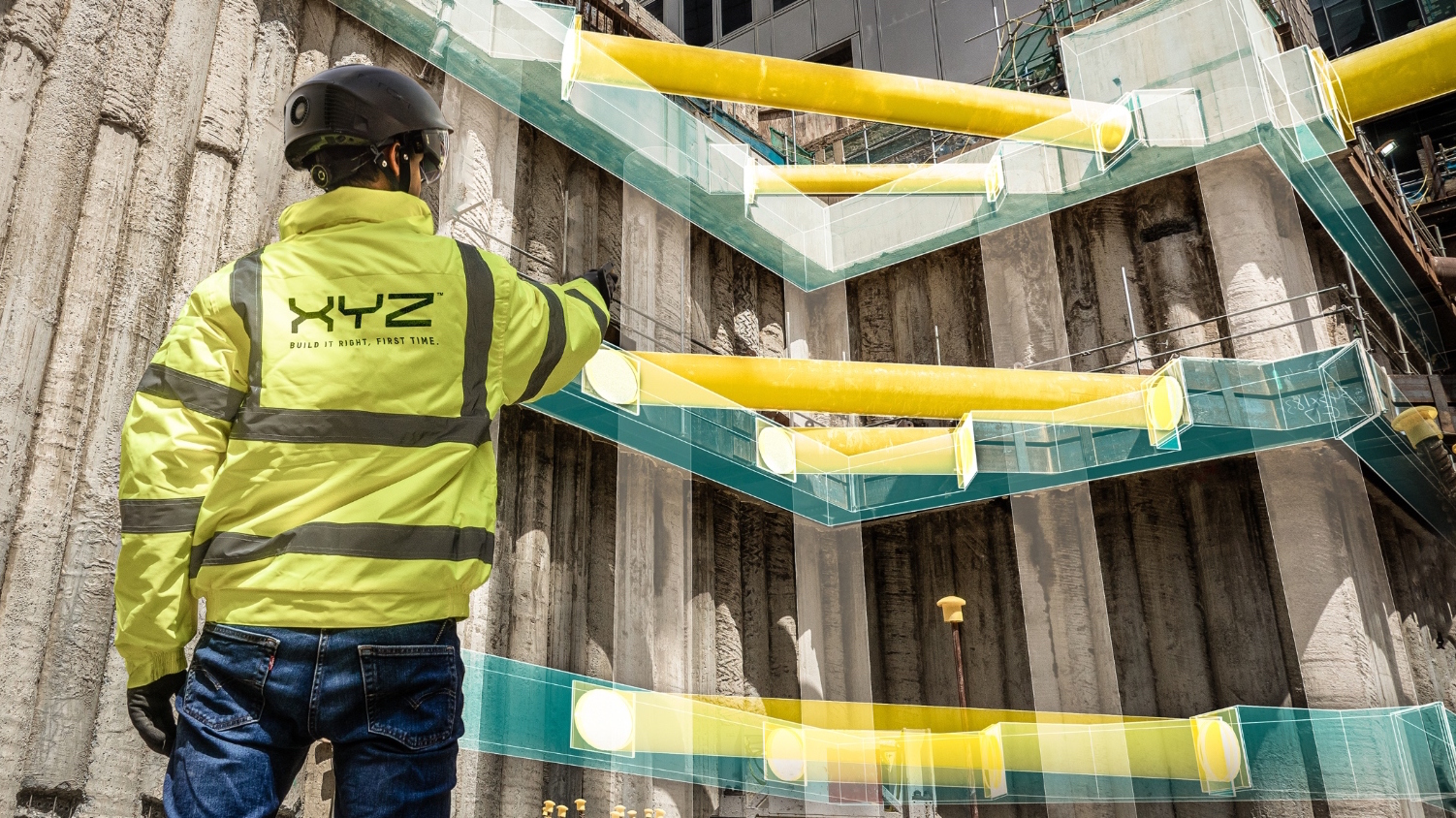
Is augmented reality the answer to construction’s many woes of the moment? Can you afford to build without it? David Mitchell has the answers to those questions.
It’s a tough time for UK construction. From economic stagnation to spiralling energy and material costs, everyone in the sector is feeling the squeeze. Profit margins are already tight and are only going to face additional pressure as we head into 2023.
With the chancellor recently confirming we had entered a recession, leaders across construction now need to think with agility, looking outside the box to where they can uncover savings to weather the storm.
One, increasingly popular way to do this is by streamlining processes and focusing on low-hanging cost cuts. Some forward-thinking contractors have set their sights firmly on evolving technologies to improve construction efficiency to achieve these goals.
State-of-the-art augmented reality (AR) is a good example of this innovative tech. Giving engineers superhuman powers to limit human error and build with greater accuracy and efficiency, it’s an innovation that helps reduce project material and energy consumption by eliminating rework. Importantly, it’s making noticeable savings for contractors at a time when it matters most. Here’s how…
The digital journey
In the last few years there has been a paradigm shift in attitudes towards construction technology. Where there was once a general reluctance and apprehension to digital adoption, the majority of construction businesses are now embracing tech solutions with open arms.
A greater understanding of how digital software and hardware can increase productivity has evolved with contemporary construction, reducing errors and delivering higher-quality builds, resulting in better outcomes for the contractor and client.
AR is the next step in a journey already underway, prompted by innovations such as CAD and 3D laser scanning. Particularly when it’s incorporated into BIM workflows. Here, AR lets field engineers overlay computer-generated 3D models onto real-world structures at scale and identify discrepancies and design deviations before the errors occur.
This move away from age-old paper 2D designs to manoeuvrable 3D holographic displays is a leap forward for mankind that is phasing out construction rework for good. One of the main applications of AR is the ability to carry out remote inspections, whereby field engineers can spot mistakes instantly and flag them at any time during a project. This stops errors in their tracks, helping contractors build it right, first time, and avoid reactive, energy-intensive and costly rework.
We have seen productivity boosted by as much as 40% in some cases where contractors have carried out remote inspections using AR.
What’s more, while AR is not a new innovation in construction, more purpose-built AR-enabled hardware that can survive the wear and tear in the field is coming to market, offering workers on the ground more safety and agility when building.
Big data with big potential
As construction digitalises, big data is becoming increasingly valuable, spurred on by innovations like cloud collaborative file management platforms that connect siloed data sets and link teams working together at different locations on the same projects. In parallel, evolving data analytics software is providing more in-depth datasets with information on carbon emissions and material costs, for example, increasing transparency throughout projects.
This allows contractors to carry out more accurate cost analyses and identify areas where they can reduce the environmental impact of operations.
With the latest engineering-grade AR that can build to millimetre accuracy, field engineers are adding to these data pools gathering real-time information onsite so that it can be collated and analysed to inform more efficient building methods. As a crucial part of the growing digital construction ecosystem, AR is not only able to capitalise on interoperable technology, but also boosts its effectiveness.
Ultimately, data informs construction workers to understand the problems that lead to persistent issues like misinformation and waste, acting as the first step in trying to overcome them.
The future’s bright, the future’s digital
Looking forward, further investment in construction technology is essential to support the adoption of AR and other digital innovations that are changing modern construction methods.
There is no denying that advanced technology offers a route to more sustainable and cost-effective building, and it’s no surprise that some top construction contractors, such as Mace and PM Group, have already invested in solutions like AR and are seeing returns as high as nine times ROI.
AR enables architects, engineers and construction workers to target pain points along project timelines like misinformation and reduce errors to a point where the impacts can be negligible. The technology is here, its potential is huge, and the market is global.
In a time when the construction industry is looking down the twin barrels of global recession and supply chain shortages, what seems like a significant investment now could pay for itself countless times over in years to come.
David Mitchell is founder and CEO of XYZ Reality.
Don’t miss out on BIM and digital construction news: sign up to receive the BIMplus newsletter.












